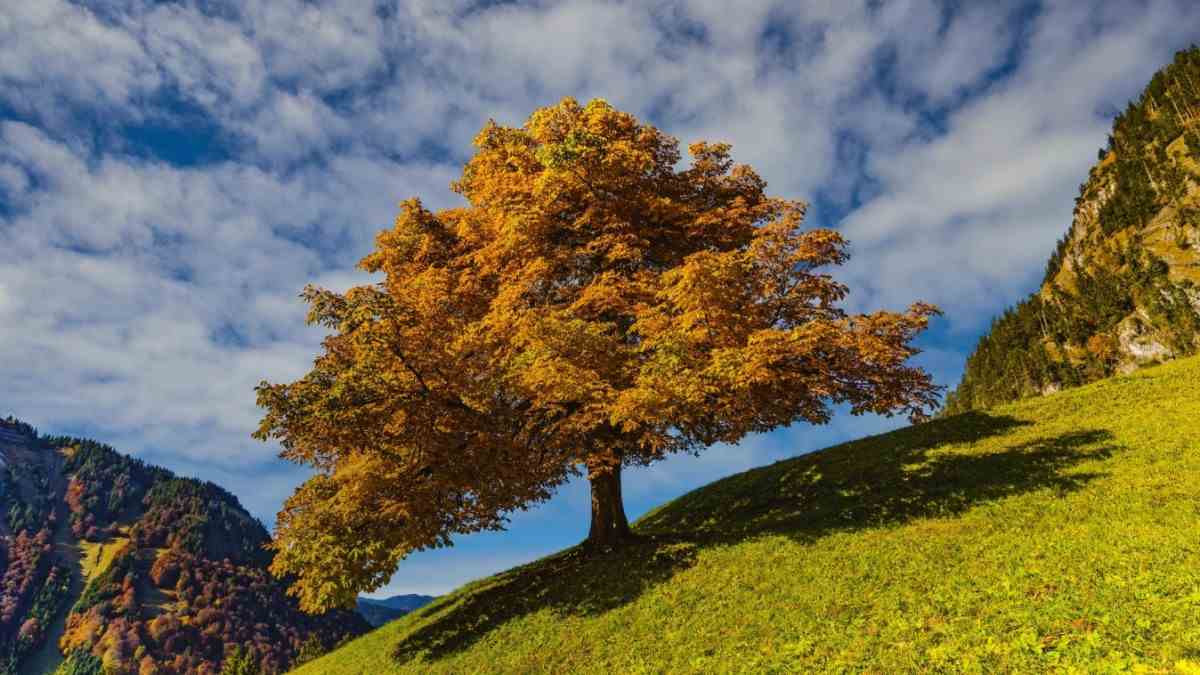A study on the forest knowledge of third-grade Bavarian schoolchildren, a research project of the German Forest Protection Association, brought it to light in 2010: “On average, each third-grade schoolchild recognized only 30.8 percent of twelve native tree species – that is, the children can only identify three trees,” says Roland Bock. From then on it was clear to him: “I have to change that!”
Bock is now the primary school director and lecturer at the University of Augsburg and is therefore in the ideal starting position to not only pass on his knowledge in the field of environmental education to his current school children, but also to impart it in teacher training seminars. As a passionate hunter, he is also regularly out and about with his three granddaughters and the dachshund Gaia in the Augsburg-Western Forests Nature Park. So he knows: “What you experience and learn on excursions in the forest stays in your heart.”
That’s why his first recommendation for families with children is: “Go outside!” What actually sounds very plausible is anything but self-evident. “When one of my granddaughters went through the subject of the forest in elementary school, they actually hadn’t been outside once with the class,” says Bock with obvious regret. In general, school lessons.
“These categories that they have to learn about trees and their leaves according to the curriculum there, i.e. jagged, serrated, sawn or indented, are not at all suitable for children,” says Bock. “They only learn them for rehearsals, after that everything is forgotten again.”
Incidentally, it’s not just the children who feel this way, but also the teachers. “Just for fun, I did the test with colleagues: What does the edge of the birch leaf look like? None of them knew that anymore.” Quite sheepishly, they would have admitted to him that they would have to learn the “jagged-or-serrated-rules” again and again at the beginning of the corresponding grade.
Life with trees: The elementary school principal, university lecturer, hunter and author Roland Bock.
(Photo: Johannes Reiner)
So Bock resorted to self-help. Together with the illustrator Johannes Reiner, who teaches at the Academy for Design in Munich, he recently published the book “Now I Understand the Trees – Identifying and Identifying Native Tree Species” with the Munich publishing house Ars edition. What is his approach? “The idea is to use a concept to familiarize the children with the trees. In addition, there is a story for each tree and its special features; the children don’t forget them, I tried that out in class.”
The dormouse Pepe and the roebuck Paule accompany the young readers through the non-fiction book, in which each of the 14 native tree species – including ten deciduous trees and four conifers – is dedicated to a lovingly and imaginatively designed double page with comic-like illustrations, photographs and short, true-to-life texts.
The red maple leaf with the characteristic points is found as a symbol on the Canadian flag and on the chest of the ice hockey goalie.
(Photo: Johannes Reiner/Arsdition)
Illustrator Reiner likes the maple illustrations best: “Because of the beautiful red that I was able to use there”. Among other things, a red maple leaf shines on the breastplate of the dormouse, who, as an ice hockey goalkeeper, fends off every attack according to the motto “No one can get past me”. The leaf, with its distinctive spikes, is found on the Canadian flag, and every Canadian athlete who represents their country at a sporting event has it on their jersey. That’s why Bock asks his students to look out for the symbol during international competitions. “Yes, I saw it on the bob,” they would tell him the next day. “Canada” is also the keyword for the maple.
Simply cut out and take with you: the tree identification cards, here about the alder.
(Photo: Johannes Reiner/Arsedition)
Another of the illustrator’s favorite pages is the one about the ash tree, for which Reiner, as he puts it, designed a “nice and dirty page”. Because the key word here is “ash”: The buds of the ash tree are black, just like your fingers after you have dipped them in ash. Also pictured here is Florian, the author’s son, who talks about his job as a chimney sweep.
So that you don’t forget all this information so easily, so-called tree identification cards are included with the book to tear out and take with you. You can even try them out together with the author on Sunday: He offers a tree excursion in the English Garden.
Tree identification live with Roland Bock: “Read for Peace”, Sun., May 15, 2 p.m. – 2.30 p.m., English Garden, meeting point Eisbach-Welle

